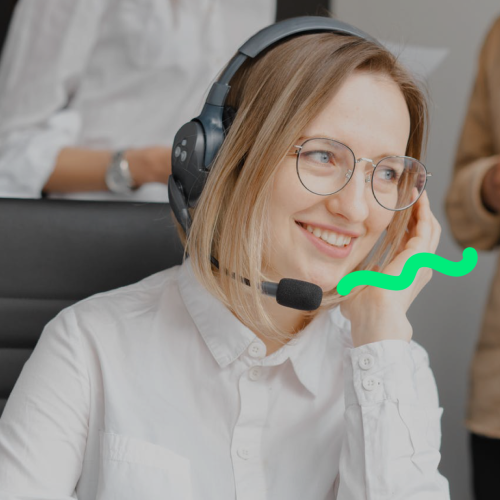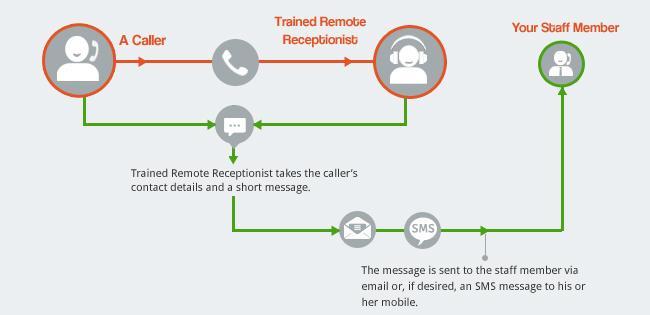All Categories
Featured
Table of Contents
- – Who Is The Best How Does An Answering Service W...
- – What Is The Best Business Answering Services -...
- – Best 12 Best Telephone Answering Service For B...
- – What Is The Best 10 Sectors That Can Benefits...
- – Top 24/7 Live Telephone Answering Services In...
- – What Is The Best What Is An Answering Servic...
Who Is The Best How Does An Answering Service Work? Company
This gadget and its followers were created by Sava Jacobson, an electrical engineer with a private consulting company. While early voice mail used magnetic tape technology, the majority of modern devices utilizes solid state memory storage; some gadgets utilize a combination of both, with a solid-state circuit for the outbound message and a cassette for the incoming messages.
"toll saving" below) (virtual telephone answering). This is beneficial if the owner is screening calls and does not want to talk to all callers. In any case after going, the calling party should be notified about the call having been addressed (for the most part this begins the charging), either by some remark of the operator, or by some welcoming message of the little bit, or addressed to non-human callers (e.
This holds specifically for the TADs with digitally saved welcoming messages or for earlier devices (before the rise of microcassettes) with a special limitless loop tape, different from a 2nd cassette, dedicated to recording. There have been answer-only gadgets without any recording capabilities, where the greeting message needed to notify callers of a state of existing unattainability, or e (phone answering).
What Is The Best Business Answering Services - Virtual Receptionists Available

about availability hours. In taping TADs the welcoming normally consists of an invite to leave a message "after the beep". An answering maker that uses a microcassette to tape messages On a dual-cassette answerphone, there is an outbound cassette, which after the specified variety of rings plays a pre-recorded message to the caller.

Single-cassette answering makers contain the outgoing message at the start of the tape and incoming messages on the remaining area. They first play the announcement, then fast-forward to the next offered area for recording, then record the caller's message. If there are many previous messages, fast-forwarding through them can cause a substantial hold-up.
This beep is typically referred to in the welcoming message, asking for that the caller leave a message "after the beep". Little bits with digital storage for the tape-recorded messages do disappoint this delay, obviously. A little might provide a remote control facility, whereby the answerphone owner can ring the home number and, by entering a code on the remote telephone's keypad, can listen to tape-recorded messages, or delete them, even when far from home.
Best 12 Best Telephone Answering Service For Businesses In ... You Can Buy

Consequently the device increases the variety of rings after which it responds to the call (generally by 2, leading to 4 rings), if no unread messages are presently saved, however answers after the set number of rings (usually two) if there are unread messages. This enables the owner to learn whether there are messages waiting; if there are none, the owner can hang up the phone on the, e.
Some devices also enable themselves to be from another location activated, if they have actually been changed off, by calling and letting the phone ring a particular a great deal of times (generally 10-15). Some company abandon calls already after a smaller sized variety of rings, making remote activation impossible. In the early days of Littles a special transmitter for DTMF tones (dual-tone multi-frequency signalling) was regionally required for remote control, considering that the previously employed pulse dialling is not apt to convey appropriate signalling along an active connection, and the dual-tone multi-frequency signalling was implemented step-by-step.
Any inbound call is not identifiable with regard to these properties in advance of going "off hook" by the terminal devices. So after going off hook the calls need to be changed to suitable gadgets and only the voice-type is immediately available to a human, but maybe, however must be routed to a LITTLE (e.
What Is The Best 10 Sectors That Can Benefits From A Phone Answering Service And Why
What if I informed you that you do not have to in fact get your gadget when responding to a consumer call? Someone else will. So convenient, best? Answering phone calls does not need someone to be on the other end of the line. Efficient automated phone systems can do the trick simply as efficiently as a live agent and sometimes even much better.
An automated answering service or interactive voice reaction system is a phone system that communicates with callers without a live individual on the line - reception services. When business use this innovation, clients can get the response to a question about your business merely by utilizing interactions established on a pre-programmed call flow.
Although live operators upgrade the client service experience, many calls do not need human interaction. An easy recorded message or directions on how a customer can recover a piece of info normally solves a caller's instant requirement - virtual telephone answering. Automated answering services are a simple and reliable method to direct incoming calls to the ideal person.
Top 24/7 Live Telephone Answering Services In Australia
Notice that when you call a business, either for support or product questions, the first thing you will hear is a pre-recorded voice welcoming and a series of options like press 1 for client service, press 2 for questions, and so on. The pre-recorded options branch out to other choices depending upon the client's choice.
The phone tree system assists direct callers to the best person or department utilizing the keypad on a mobile phone. In some instances, callers can use their voices. It deserves noting that auto-attendant options aren't restricted to the 10 numbers on a phone's keypad. When the caller has selected their first option, you can create a multi-level auto-attendant that uses sub-menus to direct the caller to the right kind of support.
The caller does not need to interact with an individual if the auto-attendant phone system can handle their concern. The automatic service can route callers to a staff member if they reach a "dead end" and need assistance from a live representative. It is pricey to hire an operator or executive assistant.
What Is The Best What Is An Answering Service? The Ultimate Guide - Cms And Why
Automated answering services, on the other hand, are considerably more economical and offer substantial cost savings at an average of $200-$420/month. Even if you do not have devoted staff to handle call routing and management, an automatic answering service improves productivity by enabling your team to focus on their strengths so they can more efficiently invest their time on the phone.
A sales lead routed to customer care is a lost shot. If a customer who has item concerns reaches the incorrect department or receives incomplete answers from well-meaning workers who are less trained to manage a specific kind of concern, it can be a cause of frustration and dissatisfaction. An automatic answering system can reduce the variety of misrouted calls, thus helping your staff members make better use of their phone time while releasing up time in their calendar for other jobs.
With Automated Answering Systems, you can develop a customized experience for both your staff and your callers. Make a recording of your main greeting, and merely update it regularly to show what is going on in your company. You can produce as lots of departments or menu options as you desire.
Table of Contents
- – Who Is The Best How Does An Answering Service W...
- – What Is The Best Business Answering Services -...
- – Best 12 Best Telephone Answering Service For B...
- – What Is The Best 10 Sectors That Can Benefits...
- – Top 24/7 Live Telephone Answering Services In...
- – What Is The Best What Is An Answering Servic...
Latest Posts
Ai Answering System Near Me ( Murray)
Leading Medical Answering Service Near Me
Top Answering Service Pricing Near Me ( Adelaide)
More
Latest Posts
Ai Answering System Near Me ( Murray)
Leading Medical Answering Service Near Me
Top Answering Service Pricing Near Me ( Adelaide)